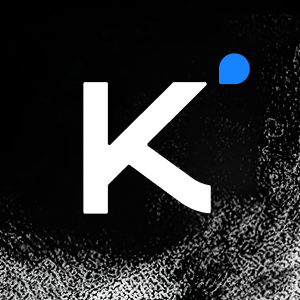AutoRoute 库中实现带悬浮按钮的底部导航栏方案
2025-07-09 05:24:15作者:贡沫苏Truman
背景介绍
在 Flutter 应用开发中,底部导航栏结合中央悬浮按钮(FAB)是一种常见的 UI 设计模式。当使用 AutoRoute 路由库时,开发者可能会遇到如何正确实现这种布局的技术挑战。
标准实现方式
在原生 Flutter 中,我们可以通过 IndexedStack 和 BottomAppBar 的组合轻松实现这种布局:
IndexedStack(
index: currentIndex(),
children: const [
AScreen(),
CScreen(),
],
),
floatingActionButton: FloatingActionButton(
onPressed: () {
Navigator.of(context).push(
MaterialPageRoute(builder: (context) => const BScreen()),
);
},
),
bottomNavigationBar: BottomAppBar(
child: Row(
mainAxisAlignment: MainAxisAlignment.spaceAround,
children: [
IconButton(onPressed: () => setCurrentIndex(0), icon: Icon(Icons.a)),
SizedBox(width: 32),
IconButton(onPressed: () => setCurrentIndex(1), icon: Icon(Icons.b)),
],
),
)
AutoRoute 中的实现方案
在 AutoRoute 中,由于路由管理的特殊性,我们需要采用不同的实现方式。以下是两种可行的解决方案:
方案一:使用 AutoTabsRouter 手动控制索引
AutoTabsRouter(
routes: const [
ARoute(),
BRoute(),
CRoute(),
],
builder: (context, child) {
final tabsRouter = AutoTabsRouter.of(context);
return Scaffold(
body: child,
floatingActionButton: FloatingActionButton(
onPressed: () => tabsRouter.setActiveIndex(1),
),
bottomNavigationBar: BottomAppBar(
child: Row(
children: [
IconButton(
onPressed: () => tabsRouter.setActiveIndex(0),
icon: Icon(Icons.a)
),
SizedBox(width: 48),
IconButton(
onPressed: () => tabsRouter.setActiveIndex(2),
icon: Icon(Icons.settings)
),
],
),
),
);
},
)
方案二:使用根路由替代标签路由
AutoRoute 作者建议的另一种方案是将 FAB 触发的路由作为根路由而非标签路由。这种方式可以简化实现逻辑,特别是当不需要在 FAB 路由中显示底部导航栏时更为适用。
技术要点解析
-
路由索引控制:在 AutoRoute 中,必须通过
tabsRouter.setActiveIndex显式控制路由切换,直接使用导航方法可能无效。 -
布局适配:底部导航栏需要为 FAB 留出空间,通常使用
BottomAppBar的CircularNotchedRectangle形状。 -
状态管理:路由索引状态应由 AutoRoute 的
tabsRouter管理,而非自行维护状态变量。 -
视觉平衡:在底部导航栏中,需要为 FAB 预留适当的空间(如
SizedBox),以保持 UI 的对称性。
最佳实践建议
-
如果 FAB 路由需要保持底部导航栏可见,推荐使用方案一。
-
如果 FAB 路由是全屏内容,不需要底部导航栏,则采用方案二更为简洁。
-
对于复杂的路由场景,可以考虑结合使用 AutoRoute 的嵌套路由功能。
通过以上方案,开发者可以在 AutoRoute 中灵活实现带中央悬浮按钮的底部导航栏布局,满足各种应用场景的需求。
登录后查看全文
热门项目推荐
相关项目推荐
 AutoGLM-Phone-9BAutoGLM-Phone-9B是基于AutoGLM构建的移动智能助手框架,依托多模态感知理解手机屏幕并执行自动化操作。Jinja00
AutoGLM-Phone-9BAutoGLM-Phone-9B是基于AutoGLM构建的移动智能助手框架,依托多模态感知理解手机屏幕并执行自动化操作。Jinja00 Kimi-K2-ThinkingKimi K2 Thinking 是最新、性能最强的开源思维模型。从 Kimi K2 开始,我们将其打造为能够逐步推理并动态调用工具的思维智能体。通过显著提升多步推理深度,并在 200–300 次连续调用中保持稳定的工具使用能力,它在 Humanity's Last Exam (HLE)、BrowseComp 等基准测试中树立了新的技术标杆。同时,K2 Thinking 是原生 INT4 量化模型,具备 256k 上下文窗口,实现了推理延迟和 GPU 内存占用的无损降低。Python00
Kimi-K2-ThinkingKimi K2 Thinking 是最新、性能最强的开源思维模型。从 Kimi K2 开始,我们将其打造为能够逐步推理并动态调用工具的思维智能体。通过显著提升多步推理深度,并在 200–300 次连续调用中保持稳定的工具使用能力,它在 Humanity's Last Exam (HLE)、BrowseComp 等基准测试中树立了新的技术标杆。同时,K2 Thinking 是原生 INT4 量化模型,具备 256k 上下文窗口,实现了推理延迟和 GPU 内存占用的无损降低。Python00 GLM-4.6V-FP8GLM-4.6V-FP8是GLM-V系列开源模型,支持128K上下文窗口,融合原生多模态函数调用能力,实现从视觉感知到执行的闭环。具备文档理解、图文生成、前端重构等功能,适用于云集群与本地部署,在同类参数规模中视觉理解性能领先。Jinja00
GLM-4.6V-FP8GLM-4.6V-FP8是GLM-V系列开源模型,支持128K上下文窗口,融合原生多模态函数调用能力,实现从视觉感知到执行的闭环。具备文档理解、图文生成、前端重构等功能,适用于云集群与本地部署,在同类参数规模中视觉理解性能领先。Jinja00 HunyuanOCRHunyuanOCR 是基于混元原生多模态架构打造的领先端到端 OCR 专家级视觉语言模型。它采用仅 10 亿参数的轻量化设计,在业界多项基准测试中取得了当前最佳性能。该模型不仅精通复杂多语言文档解析,还在文本检测与识别、开放域信息抽取、视频字幕提取及图片翻译等实际应用场景中表现卓越。00
HunyuanOCRHunyuanOCR 是基于混元原生多模态架构打造的领先端到端 OCR 专家级视觉语言模型。它采用仅 10 亿参数的轻量化设计,在业界多项基准测试中取得了当前最佳性能。该模型不仅精通复杂多语言文档解析,还在文本检测与识别、开放域信息抽取、视频字幕提取及图片翻译等实际应用场景中表现卓越。00 GLM-ASR-Nano-2512GLM-ASR-Nano-2512 是一款稳健的开源语音识别模型,参数规模为 15 亿。该模型专为应对真实场景的复杂性而设计,在保持紧凑体量的同时,多项基准测试表现优于 OpenAI Whisper V3。Python00
GLM-ASR-Nano-2512GLM-ASR-Nano-2512 是一款稳健的开源语音识别模型,参数规模为 15 亿。该模型专为应对真实场景的复杂性而设计,在保持紧凑体量的同时,多项基准测试表现优于 OpenAI Whisper V3。Python00 GLM-TTSGLM-TTS 是一款基于大语言模型的高质量文本转语音(TTS)合成系统,支持零样本语音克隆和流式推理。该系统采用两阶段架构,结合了用于语音 token 生成的大语言模型(LLM)和用于波形合成的流匹配(Flow Matching)模型。 通过引入多奖励强化学习框架,GLM-TTS 显著提升了合成语音的表现力,相比传统 TTS 系统实现了更自然的情感控制。Python00
GLM-TTSGLM-TTS 是一款基于大语言模型的高质量文本转语音(TTS)合成系统,支持零样本语音克隆和流式推理。该系统采用两阶段架构,结合了用于语音 token 生成的大语言模型(LLM)和用于波形合成的流匹配(Flow Matching)模型。 通过引入多奖励强化学习框架,GLM-TTS 显著提升了合成语音的表现力,相比传统 TTS 系统实现了更自然的情感控制。Python00 Spark-Formalizer-X1-7BSpark-Formalizer 是由科大讯飞团队开发的专用大型语言模型,专注于数学自动形式化任务。该模型擅长将自然语言数学问题转化为精确的 Lean4 形式化语句,在形式化语句生成方面达到了业界领先水平。Python00
Spark-Formalizer-X1-7BSpark-Formalizer 是由科大讯飞团队开发的专用大型语言模型,专注于数学自动形式化任务。该模型擅长将自然语言数学问题转化为精确的 Lean4 形式化语句,在形式化语句生成方面达到了业界领先水平。Python00
项目优选
收起
deepin linux kernel
C
24
9
Ascend Extension for PyTorch
Python
223
245
Nop Platform 2.0是基于可逆计算理论实现的采用面向语言编程范式的新一代低代码开发平台,包含基于全新原理从零开始研发的GraphQL引擎、ORM引擎、工作流引擎、报表引擎、规则引擎、批处理引引擎等完整设计。nop-entropy是它的后端部分,采用java语言实现,可选择集成Spring框架或者Quarkus框架。中小企业可以免费商用
Java
9
1
暂无简介
Dart
672
157
本项目是CANN提供的数学类基础计算算子库,实现网络在NPU上加速计算。
C++
662
312
React Native鸿蒙化仓库
JavaScript
262
322
🔥LeetCode solutions in any programming language | 多种编程语言实现 LeetCode、《剑指 Offer(第 2 版)》、《程序员面试金典(第 6 版)》题解
Java
64
19
仓颉编译器源码及 cjdb 调试工具。
C++
134
867
仓颉编程语言测试用例。
Cangjie
37
860
openGauss kernel ~ openGauss is an open source relational database management system
C++
160
218